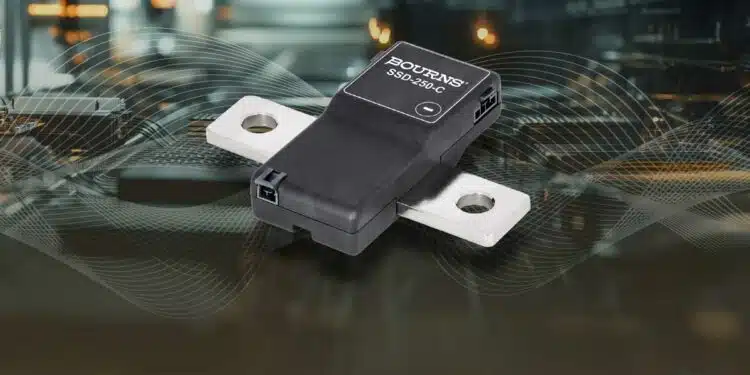Bourns, Inc., a leading manufacturer and supplier of electronic components for power, protection, and sensing solutions, announced that it has further expanded its digital shunt sensor line with the release of the Riedon™ Model SSD-250A Series Shunt Sensor – Digital by Bourns.
The new 250 amp series is available in two versions: the RS-485 serial interface model, which can also be configured as MODBUS RTU, and a customizable CANbus model.
Designed to give developers a broader range of measurement solutions with the benefits of digital, this series features 100 A, 250 A and 500 A nominal current, a -40 °C to +115 °C operating temperature range and 1500 VDC galvanic isolation that helps to enhance accuracy and operational stability.
Offered in a compact System-in-Package (SIP), the Model SSD-250A Series delivers calibrated and temperature-compensated digital output, making these shunt sensors ideal current sensing solutions for a wide variety of battery-related applications including renewable energy systems, motor drives and EV charging stations.
These shunt-based sensors also help eliminate the need for periodic device calibrations, all while providing highly accurate measurements that contribute to more efficient use of power. In addition, the new series features considerably lower insertion resistance than passive shunt sensors and Hall Effect sensors.
The Riedon™ Model SSD-250A Series Shunt Sensor – Digital by Bourns is available now, and is RoHS compliant.
Features
- 24-bit isolated shunt current sensor with CANbus or RS-485 interface
- 250 A Nominal current
- 1500 VDC reinforced galvanic isolation
- ±0.1 % Tolerance
- 16-bit +150 °C microcontroller
- 24-bit ADC with buffered analog inputs
- ECC flash memory with autocorrect for single bit errors
- Internal and external CRC data error detection
- Advanced non-linear temperature compensation
- RoHS compliant*
Applications
- Battery systems
- Renewable energy
- Motor drives
- EV charging stations































